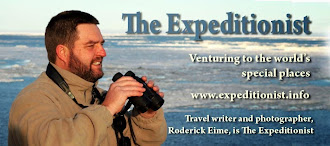New Destination Guide for Australia’s Christmas Island
Nature lovers from all over the world are flocking to Christmas Island, and it’s nothing to do with imminent arrival of a certain big man in a red suit.
The mass migration of millions of endemic red land crabs has turned the Indian Ocean island into the set of a real-life Discovery Channel documentary.
 |
| Crabs cross the road safely under a purpose-built grid. Copyright: Christmas Island Tourism Association |
Described by naturalist Sir David Attenborough as one of the most spectacular annual migrations on the planet, this extraordinary natural phenomena will climax on Thursday (18 December), when on the outgoing high tide, millions of the female red crabs will simultaneously spawn (drop their eggs in the sea).
“Witnessing this spectacle is on the bucket list for nature-lovers from all corners of the globe and those who have made the pilgrimage here this year will join international television crews at the best vantage spots, atop cliff tops and on the beaches,” says Linda Cash of the Christmas Island Tourism Association.
“After the female crabs do their joyous jiggle and release billions of eggs in the sea they will return to their burrows high in the jungle, a journey which could take a week or more” remarks Ms Cash.
The crabs are biologically programmed to take the most direct route back to their burrow which means absolutely nothing gets in their way. “They turn the island’s parks, golf course (where there’s a penalty stroke should your ball accidentally hit one) and beaches into a moving crimson carpet,” elaborates Ms Cash.
However, the biggest challenge for the crabs during their migration isn’t to wow camera-toting tourists, rather the much more critical task of safely crossing the roads.
“In recent years the community has made a great effort to reduce to number of crabs killed on the roads,” says Ms Cash, who adds “there’s a real appreciation of the importance of the crabs to both our fragile island ecosystem and our nature-based tourism industry.”
“The local radio station broadcasts special ‘crab bulletins’ to advise islanders of the crabs’ latest movements and roads where numbers are thickest are closed,” explains Ms Cash, who adds, “dedicated rangers from the Christmas Island National Park have even rolled-out kilometres of crab fences along the side of roads to funnel crabs through a network of grids (and bridges) which allow crabs to pass safely under (or over) the roads.”
Even the school bus stops short of the school to avoid the high numbers of crabs that march through the school grounds, where special crab boards have been installed on doors and windows to stop the crabs scuttling through the classrooms and interrupting lessons.
To help those crabs which still make it onto the roads, many locals also travel with a rake or broom in their car, so they can gently rake or sweep crabs (which if undertaken with care doesn’t harm the crab) out of danger.
“Some islanders are even planning to clear a special landing zone of the crabs on Christmas Eve just for Santa’s sleigh,” reveals Ms Cash, who adds, “we are in close consultation with Airservices Australia about the precise time for Santa’s arrival to ensure than that no crabs are injured when Santa touches down on his favourite island.”
To coincide with this year’s spawning spectacular, the Christmas Island Tourism Association has launched a new Destination Guide. The free 40-page booklet, crammed with stunning photography, is a must-read for anyone contemplating a visit to the tropical island.
Ms Cash points out that Christmas Island isn’t just about the crabs, “the guide showcases our other natural wonders including our unique seabirds, stunning marine life (you can swim and snorkel with whale sharks) along with a smorgasbord of cultural experiences you won’t find in other parts of Australia.”
For a copy of the new Christmas Island Destination Guide: www.christmas.net.au/destination-guide.html
For updates on the mass migration of the red crabs: www.christmas.net.au www.facebook.com/ChristmasIslandTourism and www.twitter.com/citourism
For updates on Santa’s flight path: www.airservicesaustralia.com/santa
Did You Know? Christmas Island was given its name by Captain Mynors of the British ship Royal Mary who discovered it on 25 December 1643.



You must be logged in to post a comment Login